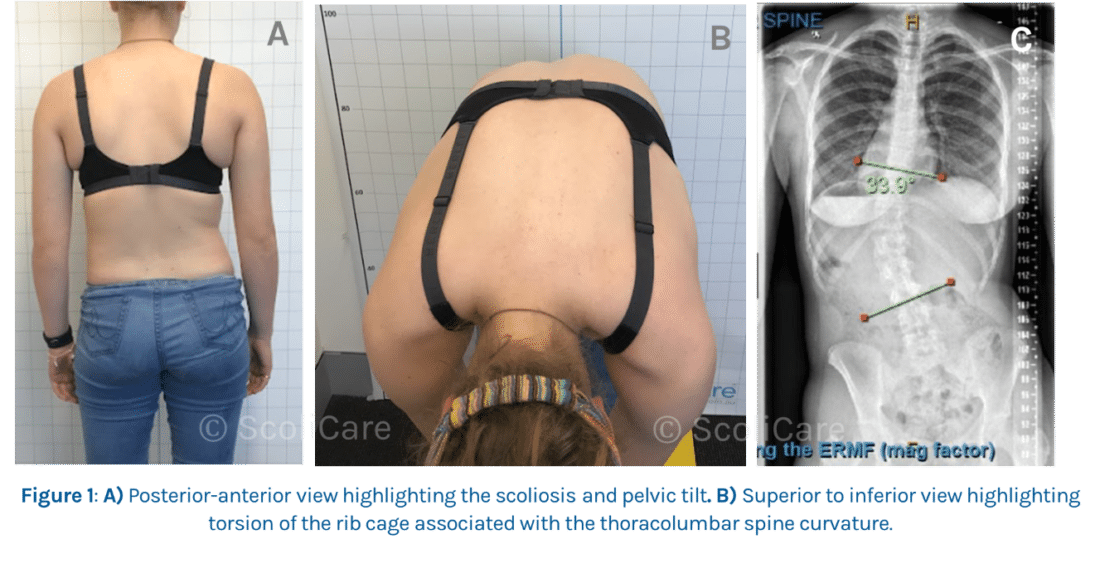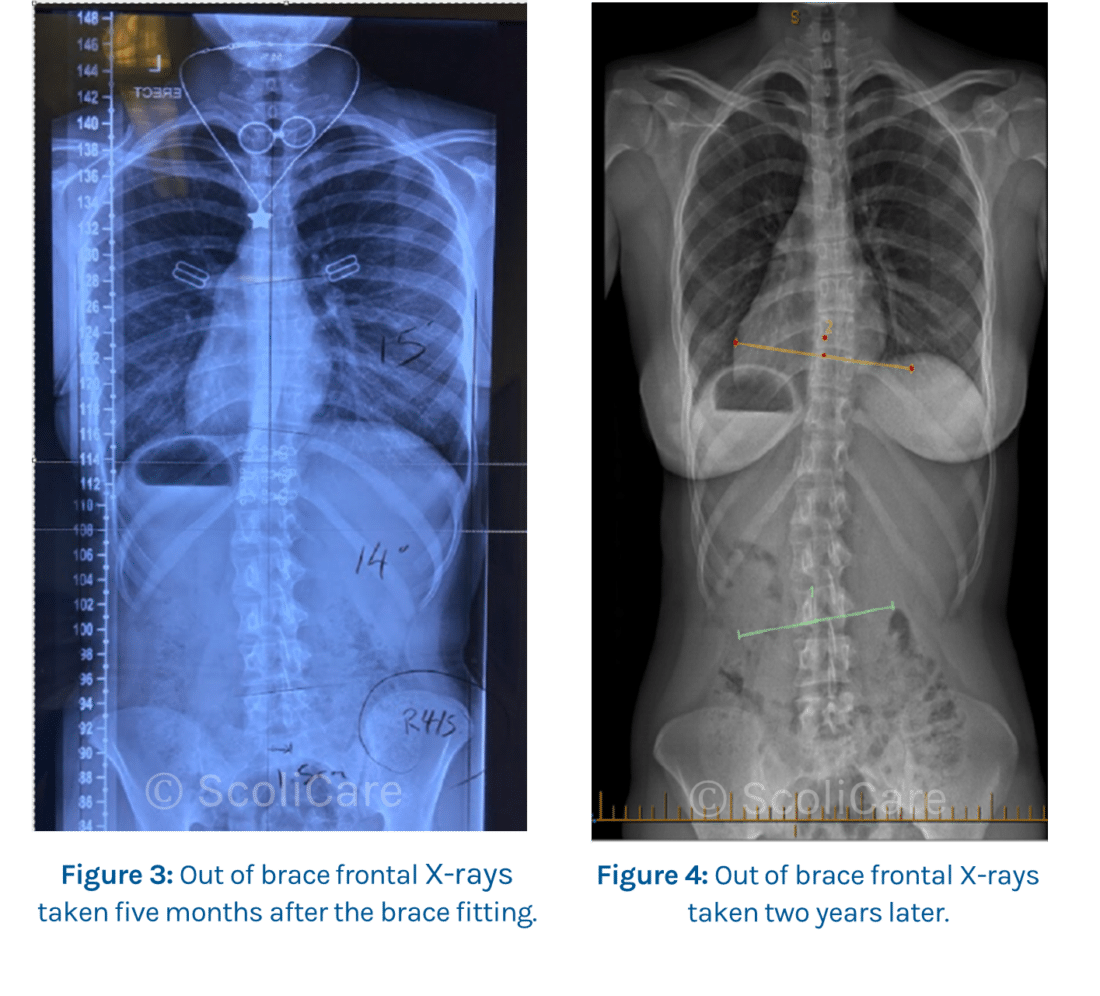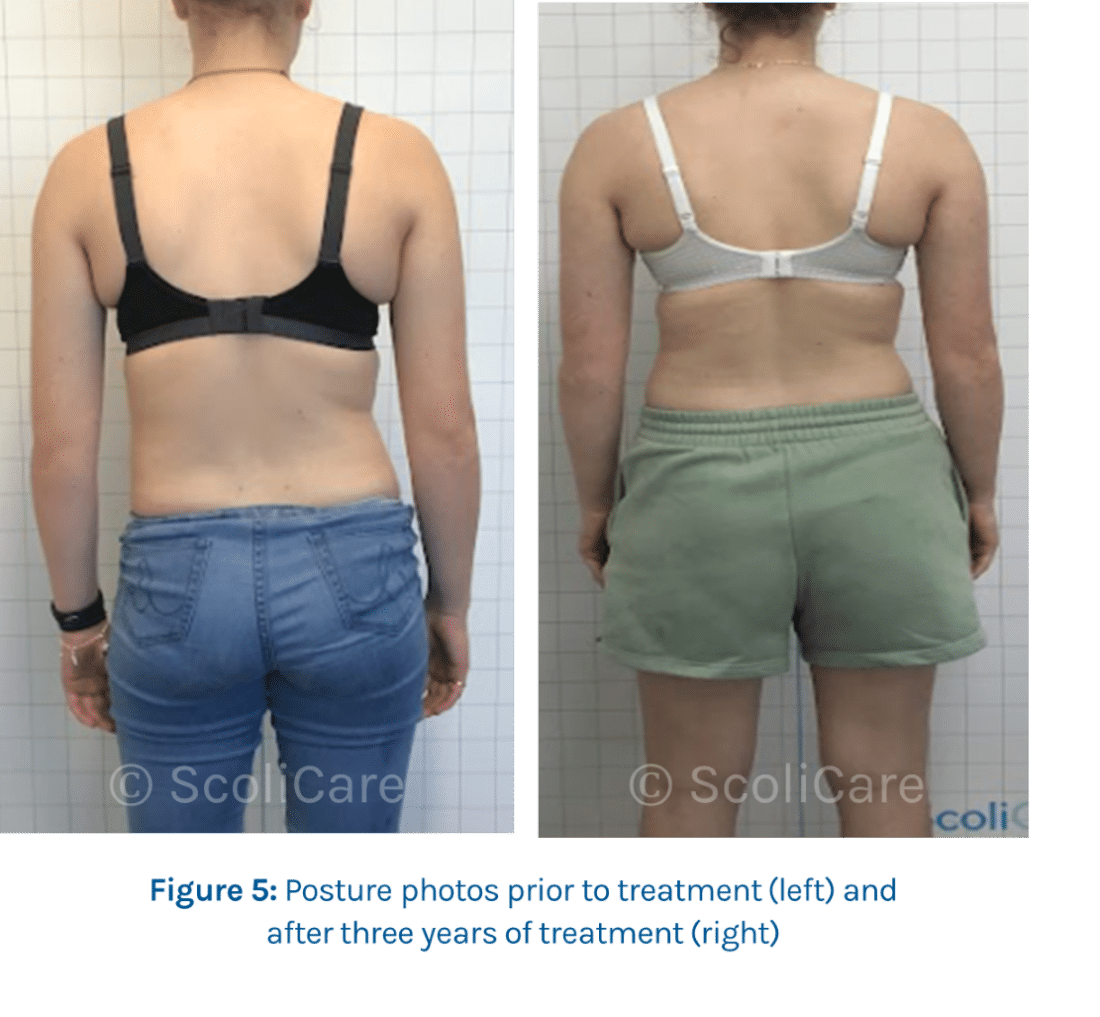Female aged 14 years with a 34° thoracolumbar curve.
Reduction of Severe Scoliosis using a 3D Designed Custom Scoliosis Orthosis in a Young Active Female
Summary:
This case details the successful management of a young active female with adolescent idiopathic scoliosis (AIS) using a using a 3D designed custom scoliosis orthosis and physiotherapeutic scoliosis specific exercise. The patient initially presented to the ScoliCare clinic at age 14 with a 34° left thoracolumbar curve. There were obvious distortions to the patient’s posture – specifically right coronal imbalance and a loss of thoracic kyphosis.
The patient was prescribed a custom rigid thoracolumbosacral orthosis (TLSO) combined with scoliosis specific exercise. After 2 years of bracing and scoliosis specific exercise the patient’s curve had been reduced from 34° down to 16°. The patient’s posture was also significantly improved with treatment.
Case Background
The patient was a 14-year-old, active female that enjoyed participating in gymnastics. The patient’s scoliosis was first diagnosed several months prior by an orthopaedic surgeon. The patient had been undergoing physiotherapy for the prior year due to pain in her lower back and shoulder blades. At the time of her orthopaedic consult, she was told that only surgery would help her curve. Her curve, however, was only 34 degrees at the time and according to both SOSORT and SRS guidelines, this is not within the recommended guidelines for curves of this size. Guidelines recommend bracing and physiotherapeutic scoliosis specific exercises for curves between 20-45 degrees.
Examination Findings
The examination revealed some significant postural changes. Specifically notable in the thoracolumbar region, together with waist curve asymmetry and torsion of the rib cage (Figure 1). X-rays taken at the time showed a 34° curve in the thoracolumbar spine. The patient was a Risser 3 at the time of presentation, indicating that there was still remaining growth.

Intervention
As the curve was well over 20 degrees, and the patient still skeletally immature with remaining spinal growth, it was recommended that the patient be fitted with a 3D designed custom scoliosis brace, and ScoliBalance, a physiotherapeutic scoliosis specific exercise (PSSE) program.
The recommendation was that the patient be braced for around two years, until her growth had stopped. She was also prescribed a daily ScoliBalance program which in addition to supporting the brace corrections, was also to focus on normalising sagittal and coronal balance. New exercises were added as she progressed with treatment.
The patient was followed-up regularly to ensure that they were responding to treatment and also to their monitor bracing and exercise compliance.
Outcomes
The patient’s spine responded favourably to the treatment with follow-up X-rays five months later showing that the initial thoracolumbar curve could be reduced from 34° down to 14° without the patient wearing the brace. The spine at this time was more balanced with a left thoracolumbar curve of 14° and a right thoracic curve of 15° (Figure 3).
At the patient’s follow-up two-years later, the curve out of brace had reduced to 16° in the thoracolumbar spine with no evident curve in the thoracic spine (Figure 4).
Although still undergoing bracing and ScoliBalance exercises, the patient’s posture has significantly improved. Her torso appears much more balanced when compared with her posture prior to starting treatment (Figure 5).


Discussion
Normally, brace treatment is reserved for AIS patients with moderate (20-45°) scoliotic curves. Scoliosis specific exercise rehabilitation is used in mild (10-20°) scoliosis as a standalone treatment, and as a supplement to bracing in patients with moderate scoliosis. Patients with more severe scoliosis are typically managed surgically. There is emerging research to support the use of bracing or exercise in patients with curves exceeding 45° in patients that have refused surgery.
This patient will continue with care and monitoring at regular intervals until all bone growth has ceased. Currently her prognosis is improved as her curve at the current measurement of 16° is considered low risk for progression.
Conclusion
This case demonstrates that even moderate AIS curves can progress and change over time. The aim of treatment based on the SOSORT and SRS guidelines for moderate curves is to prevent curve progression to where there is a need for surgical intervention. The curve in this case not only stopped progressing, but also to date has shown significant improvement using a 3D designed custom scoliosis orthosis and scoliosis specific exercises.
© ScoliCare
NB: Results vary from case to case. Our commitment is to recommend the most appropriate treatment based on the patients type and severity of scoliosis.
The post Case – Adolescent Bracing (14 year old female) appeared first on ScoliCare.
